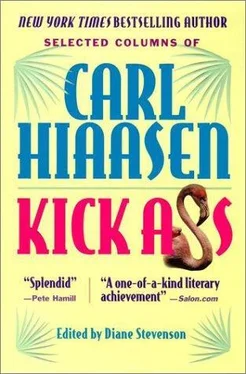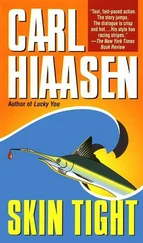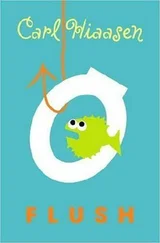Penetrable only by canoe and foot, the Pond Apple Slough is a refuge for bobcats, raccoons, squirrels and gray foxes; snakes, alligators and endangered crocodiles; hawks, ospreys, kestrels and other birds of prey. The animals have adapted remarkably well to the swamp's clamorous borders, and even to the roar of 727s passing low on approach to the Fort Lauderdale-Hollywood airport.
But soon there will be new neighbors: Interstate 595, arcing high overhead, and a massive garbage incinerator, with two enormous landfills. The highway is an aesthetic nuisance but nonintrusive; the incinerator is something else.
The battle has been predictably emotional, with homeowners and environmentalists on one side, county officials on the other. Beginning Tuesday at the Davie-Cooper City Library, state officials will hold nine days of hearings about the new garbage plant, and one of the main issues is its effect on the rare slough.
The swamp itself is on state property, technically protected. But one of the landfills is planned for 200 acres of county property, now sawgrass, which borders the tall cypress. Environmentalists fear poisonous runoff from the ash and refuse will decimate the swamp.
George Fitzpatrick, chairman of Broward's Environmental Quality Control Board, says the landfill "will have a very negative effect … You shouldn't build incinerators with landfills in a swamp."
Adds naturalist Woody Wilkes: "It will destroy this whole area. There's no way to get around it."
Faced with a mountainous garbage crisis, Broward is determined to build new incinerators; it's already issued $521 million worth of bonds to finance two of them.
Tom Henderson, director of resource recovery, says the county has spent a fortune studying the pond apple habitat and is committed to saving the slough and restoring long-lost waterways near the dumps.
"The area's going to be much better than what's there," says Henderson.
He also says the dump site nearest the Pond Apple Slough won't be needed until the turn of the century, if ever, and that all ash would be deposited on a thick layer of plastic to prevent leeching into the precious groundwater.
Opponents say that's not enough. They view the incinerator as a fountain of rancid air, and they want modern emission controls on its smoke-stack. They also want its ash and rubble trucked out west; in other words, no landfills near the swamp.
The classic problem with dumps is that nobody wants one in their own backyard. Trouble is, this just isn't any old backyard; it's one of the few remaining glimpses of Florida as it was a century ago, a gentle canoe trip into the past.
Surely the state can settle this controversy by demanding strict, enforceable measures to save the Pond Apple Slough and the air it breathes. A dump is one kind of political legacy; a wilderness is another.
It would be a tragedy to lose it to a 40-foot hill of burnt slop.
Sewage charges latest outrage at ocean reef
December 16, 1985
The idea of dumping raw sewage into the waters of the John Pennekamp Coral Reef State Park is so vile that it makes the blood boil.
This month, the wondrous park's 25th anniversary, the Ocean Reef Club in North Key Largo was indicted on 346 counts of allegedly emptying its toilets straight into the ocean over the continent's only living coral reef.
If the charges are true, this is by far the worst in the club's long history of flagrant abuses. Of all the developments in the Florida Keys, Ocean Reef Inc. has been the most prolific violator of environmental laws. Its motto might as well be: Let's do it until we get caught.
The place is legendary: Canals appear overnight to create instant "waterfront" lots; protected mangroves vanish in the darkness. The investigatory files on Ocean Reef stuff several drawers at the state Department of Environmental Regulation and the U.S. Army Corps of Engineers.
Yet sanctions against the resort have, until now, been laughably weak. The largest fine was $50,000 stretched out to five payments in five years—hardly the sort of penalty that teaches a lesson.
Much is made of the fact that Ocean Reef is a haven for the rich and famous. Wealthy or not, the people who live there had nothing to do with the sewage scandal. In fact, their complaints helped trigger the investigation by the Environmental Protection Agency.
"We're shocked by what happened, and we're angry," says Barrett Wendell, president of an Ocean Reef property owner's group. "The reef is too valuable an asset to be treated this way."
"We're the victims—not the people perpetrating this," adds Charles Howell, another resident.
Ironically, Ocean Reef homeowners had been negotiating with the developers to buy out the utilities, including the long-troubled sewage system. Last summer a tentative agreement was reached, but suddenly Ocean Reef Inc. changed its mind and decided to keep the sewer plants.
For many homeowners, this month's pollution indictment was a bitter and shameful moment. "We felt like we were indicted, too," Howell says. Some members fired off a letter to financier Carl Lindner, the principal owner, condemning the company for such a "despicable" act.
Says resident Clayton Kolstad: "We think it stinks."
And stink is the word for it. According to the indictment, raw fecal matter was purposely spewed into a slender waterway known as Channel Cay. From there tidal currents swept the putrid effluent into the Atlantic and out over the endangered offshore reef.
The dumping allegedly took place between Nov. 1, 1982, and Nov. 10, 1983, but several residents claim it actually went on much longer. Ocean Reef Inc. has declined to discuss the charges.
Up to now, the club—whose membership is full of political heavyweights—has treated the state and Army Corps like pesky gnats.
But the EPA is the big league, and this indictment is criminal. Ocean Reef's president, vice president and utilities director face a possible year in prison for each of the 346 counts, while the development conceivably could be hit with an $8.6 million fine.
If the club has a lick of common sense, the case will be settled before it ever gets to trial. A fine will be paid, nobody will do a day in jail, and the company will get back to the business of squeezing every square inch of profit out of its North Key Largo holdings.
Ocean Reef Inc. can afford a hefty fine: A couple of years ago, one undeveloped waterfront lot sold for $900,000.
Prosecutors ought to shoot for a seven-figure settlement. Big money is the only thing that gets arrogant polluters' attention, and it's the only thing that will make them think twice before opening a "magic valve" again.
As one furious Ocean Reef resident put it: "I don't know what kind of mind would pump raw sewage into a canal where children swam and snorkeled and boated. It's horrible."
Margaritaville marshlands: Wasting away?
October 27, 1986
The most tranquil part of this crazed island is unknown even to some of the locals—407 nearly virgin acres of mangrove, mahogany and marshlands. The Salt Ponds.
In a place where real estate is as precious as Mel Fisher's gold, it would seem a miracle that the ponds haven't already been drained, dredged, paved and plastered. Unfortunately, that sad day might be coming. A developer named Larry Marks has fought an extended court battle for the right to put up 1,100 units here, and he says he'll do it.
In the old days, a familiar corps of tenacious environmentalists would have stood alone against the development, and probably lost. This fight is different. Opposition to the Salt Ponds project is broader, and it includes a famous voice that carries clear to Tallahassee.
Jimmy Buffett can look out at the ponds from the porch of his home. He has explored by canoe and found egrets, herons, ospreys, even an eagle. "It's beautiful in there," the singer says.
Читать дальше









